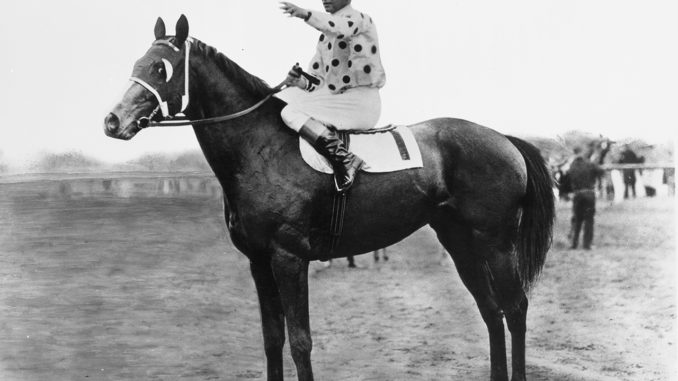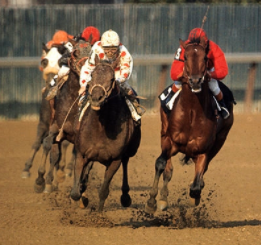
For a generation in the middle 20th century Calumet Farm laid claim to being the leading ownership dynasty in U.S. racing, and arguably of all time. Among the farm’s achievements were a record eight victories in the Kentucky Derby and six in the Preakness, as well as two triumphs in the Belmont Stakes by Triple Crown heroes Whirlaway and Citation.
Sometimes forgotten, though, is that before the devil red and blue colors of Calumet dominated the classics in New York Yankees-style fashion, it was Belair Stud that was the original “Bronx Bombers” of the Triple Crown.
Although its roots lied in Maryland, Belair was a thoroughly entrenched part of the New York racing aristocracy when its white and red polka dot silks rose to fame in the 1920s and 1930s. Owner William Woodward Sr. was both a prominent banker and a 20-year chairman of The Jockey Club.
A decade before Calumet hit its stride, Belair entered the history books owning the father-son, Triple Crown-winning duo of Gallant Fox (1930) and Omaha (1935). Indeed, half of the Belmont Stakes run in that decade were owned by Woodward’s stable, the others being Faireno (1932), Granville (1936), and Johnstown (1939).
With Calumet ascendant in the 1940s, Belair would enjoy more success overseas that decade. Woodward-owned horses twice won the St Leger, the third leg of England’s Triple Crown, and also won renewals of that country’s two classics for fillies: the 1000 Guineas and the Oaks.
In addition to their two Triple Crown winners, the colors of Calumet and Belair were sported by three different horses that won two-thirds of the Triple Crown. In Calumet’s case, Pensive, Tim Tam, and Forward Pass all came up short in the Belmont after winning the Kentucky Derby and Preakness. For Belair, losses earlier in the series were the norm.
Johnstown was the first horse campaigned by the Woodward family to fall one leg short of a Triple Crown sweep. After capturing the Kentucky Derby by a record-equaling eight lengths, Johnstown finished fifth in the Preakness before rebounding in the Belmont by five lengths. His lackluster run in the Preakness is often chalked up to a muddy track, a condition Johnstown never raced in before nor would again.
After Woodward’s death in 1953, his son, William Woodward Jr., inherited the stable. Months before he was shot and killed by his wife under accidental circumstances in 1955, the junior Woodward witnessed Nashua sport the Belair colors to victory in the Preakness and Belmont after finishing second to fellow Hall of Famer Swaps in the Kentucky Derby. Nashua would later beat Swaps in a match race and was voted Horse of the Year.
The only son in the family, “Billy” Woodward’s death at the young age of 35 meant that the Belair racing colors would come into possession of his eldest sister, Edith Bancroft. In 1967, the Belair colors were hoisted two more times in classic competition when Damascus strolled to easy victories in the Preakness and Belmont after disappointing in the Kentucky Derby. He, too, was a runaway Horse of the Year selection.
The famed Belair silks were worn to victory in 14 Triple Crown races, not far behind Calumet’s record of 16 (which was increased by one in the 2013 Preakness, though with an entirely different set of colors). In an age when private, family-run stables are generally a fond but distant memory in American racing, it’s a mark unlikely to be equaled for a long time.



